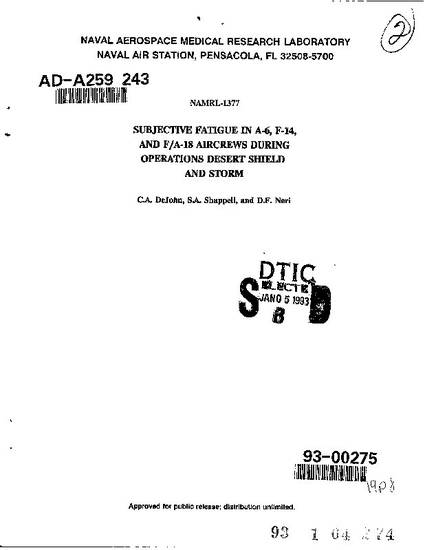
Fatigue occurring during naval air combat can reduce performance, impair operational effectiveness, and compromise safety. This study examines the effect of combat missions on the subjective fatigue of naval aircrews deployed aboard USS AMERICA during Desert Shield and Desert Storm. Fatigue was determined using three questionnaires that were completed before and after each mission. Although fatigue significantly increased during combat missions, it usually returned to preflight levels by the next day without noticeably increasing as the operation progressed. We feel that judicious aircrew scheduling on the part of operational planners was one of the most important factors contributing to this result. To minimize fatigue during naval air combat operations, we recommend that, as resources permit, 'no-fly' days be regularly scheduled, only one or two missions should be scheduled per day, and adequate crew rest should be planned between missions.
Available at: http://works.bepress.com/scott-shappell/84/

AD-A259 243. NAMRL-1377. Dr. Shappell was not affiliated with Embry-Riddle Aeronautical University at the time this report was published.